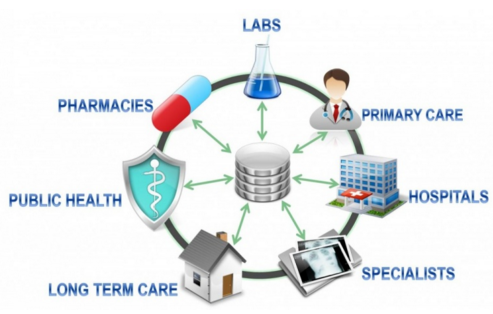Financing Health IT
Developing a mechanism to finance investment in health IT can be a challenging process as decisions are heavily influenced, positively or negatively, by the policies of the Congressional Budget Office (CBO) (Longest, 2010). The CBO is a federal agency within the legislative branch of the US government that provides budget and economic information to Congress. It was created as a nonpartisan agency by the Congressional Budget and Impoundment Act of 1974. In 2008, the Congressional Budget Office reported that about half of all growth in healthcare spending over the past several decades has been associated with changes in medical care due to technological advances. Healthcare spending will account for more than 30 percent of the GDP by 2035 (Longest, 2010). 
As healthcare innovations evolve, the CBO implements policies to support and sustain the change. According to Longest (2010), the policy modification phase follows the implementation of the policy, and occurs due to potential concerns or consequences of the policy experienced by those that were directly impacted. Two phases make up the policy modification process: (1) the formulation modification phase and (2) implementation modification phase (Longest, 2010). While financing policy can be driven by the CBO, policies can be modified through interaction with the agency if they have adverse impacts on operations.
Strategies for Sustaining Innovation in Health IT
Many policymakers believe that health information technology (IT) is necessary to improve the efficiency and quality of health care in the United States. Wider adoption of health IT has the potential to generate both internal and external savings. Internal savings are those that can be realized by healthcare organizations and providers, which would be seen in the form of improved efficiency on how care is being delivered. External savings would be those that the provider or healthcare organizations accrue to another provider or healthcare system such as the relevant health insurance plan or even the patient (i.e. ability for patient in the health care sector to exchange pertinent information).
Two studies, one by the RAND Corporation and one by the Center for Information Technology Leadership (CITL), provide estimates of the potential net benefits that could result from nationwide adoption by all providers and healthcare systems. Unfortunately, these studies measured different sources of such savings. The RAND research focused primarily on savings that the use of health IT could generate by reducing costs to providers and healthcare organizations, whereas the CITL study limited its scope to savings from achieving full interoperability of health IT, which excluded any potential improvements in efficiency with providers or healthcare organizations. It is telling, however, that both studies, while measuring different variables, arrived at similar conclusions.
The involvement of the federal government in sustaining adoption of health IT is a significant issue for consideration as the initiative continues to grow. The federal government is a major purchaser of health care services through programs such as Medicare and Medicaid. As the manager of those programs, the government is responsible for running them efficiently and maintaining a level of quality in their services that reflects the views of the electorate as expressed by policymakers. The federal government, as a payer, assesses the benefits and costs of health IT, determines which elements of the technology should be required to run federal health care financing programs efficiently and at the desired level of quality, and takes appropriate steps to achieve the level of use of health IT that meets those criteria. I have posted in my earlier blogs the incentives the federal government and other agencies have put in place to encourage the utilization of health IT.
The government is already making some modifications to its EHR incentive program. In January of 2016, the Centers for Medicare and Medicaid Services (CMS) made an announcement indicating that the Medicare Electronic Health Record Incentive Program will be replaced in 2017 by the new Merit-Based Incentive Payment System (MIPS) for physicians, not hospitals. CMS has worked with physician organizations to develop key themes that will guide the changes. CMS is proposing to transition from rewarding providers for the use of technology to patient outcomes. Additionally, there has been commitment to enhance the security of health IT as mentioned in my earlier posts.
From a state perspective, Arizona has been awarded funds to participate in the Health Information Exchange (HIE). The HIE Program funds states’ to rapidly build capacity for exchanging health information across the health care system both within and across states. States who receive the funds are responsible for increasing connectivity and enabling patient-centric information flow to improve the quality and efficiency of care as well as advancing governance, policies, technical services, business operations and financing mechanisms. The program is intended to build on existing efforts to advance regional and state-level HIE while moving toward nationwide interoperability. This program falls under The Office of the National Coordinator for Health Information Technology (ONC). Hence, there is state support for sustaining this innovation.
From the local level perspective, providers and healthcare organization are positioned to actively influence supporting and sustaining the health IT innovation for the populations they serve. By participating in the state HIE, meeting the federal government requirements for meaningful use are all efforts to support and sustain this innovation. As individual healthcare consumers we can keep our patient portals updated and use the information to communicate more effectively with our healthcare providers to make better decisions on addressing our healthcare needs.
References:
Retrieved from: http://www.azhec.org/?page=hie_arizona
Retrieved from: http://www.citl.org/
Retrieved from: https://www.cbo.gov/
Retrieved from: https://data.oecd.org/healthres/health-spending.htm
Retrieved from: https://www.healthit.gov/newsroom/about-onc
Retrieved from: http://www.rand.org/topics/health-information-technology.html
Longest, B.B. Jr. (2010). Health policymaking in the United States (5th ed.). Chicago, IL: Health Administration Press.

 one particular technological development that will shape the future of healthcare organizations. Value-based care and health information exchanges are an important part of the overall healthcare landscape. The ability for all providers to have access to a complete health record; from general practitioners, specialists, and acute care organizations, to post-acute care organizations, etc. – will only grow as a critical component of care delivery in the future. The timing to standardize the context of patient portals seems to be in alignment with the future of interoperability.
one particular technological development that will shape the future of healthcare organizations. Value-based care and health information exchanges are an important part of the overall healthcare landscape. The ability for all providers to have access to a complete health record; from general practitioners, specialists, and acute care organizations, to post-acute care organizations, etc. – will only grow as a critical component of care delivery in the future. The timing to standardize the context of patient portals seems to be in alignment with the future of interoperability. system. Electronic records streamline the medical care process, lower malpractice claims, and increase coordination between providers. Improvements still need to be made in communication of patients between facilities and providers. These communication gaps can increase costs, and lower patient outcomes. Standardization of patient portals can help close those communication gaps. If patients have access to their portal and are required to input certain data, they will have a better understanding of their situation and specific needs to enable more effective dialog with providers to get the care they need.
system. Electronic records streamline the medical care process, lower malpractice claims, and increase coordination between providers. Improvements still need to be made in communication of patients between facilities and providers. These communication gaps can increase costs, and lower patient outcomes. Standardization of patient portals can help close those communication gaps. If patients have access to their portal and are required to input certain data, they will have a better understanding of their situation and specific needs to enable more effective dialog with providers to get the care they need. information is the most significant unintended outcomes of EHRs. In February 2016, a California Hospital was challenged with this issue. IT hackers intercepted Presbyterian Medical Center’s IT system and followed with a payment of $17,000 to reopen their IT network. Beyond the financial implications of this event it was very disruptive to the operations of the organization. Additionally, in March 2016, Methodist Hospital in Henderson, Kentucky was also intercepted by IT hackers. Their response, however, to similar ransomware demands was to shut down their IT networks, and pay nothing.
information is the most significant unintended outcomes of EHRs. In February 2016, a California Hospital was challenged with this issue. IT hackers intercepted Presbyterian Medical Center’s IT system and followed with a payment of $17,000 to reopen their IT network. Beyond the financial implications of this event it was very disruptive to the operations of the organization. Additionally, in March 2016, Methodist Hospital in Henderson, Kentucky was also intercepted by IT hackers. Their response, however, to similar ransomware demands was to shut down their IT networks, and pay nothing.






 Looking to the future
Looking to the future
